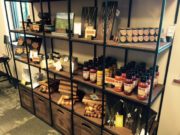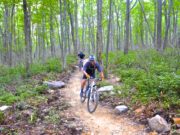Photos courtesy Tionesta Market Village
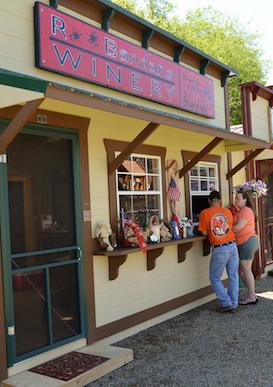
Photos courtesy Tionesta Market Village
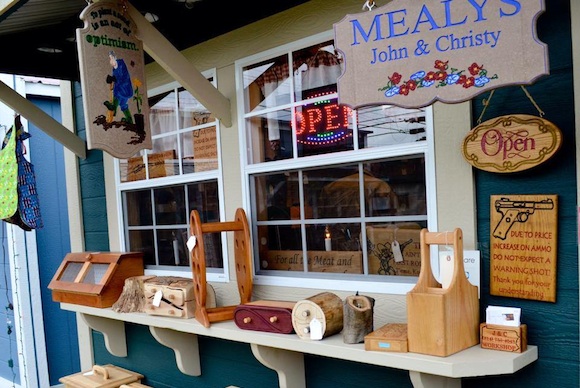
Tionesta in 1910
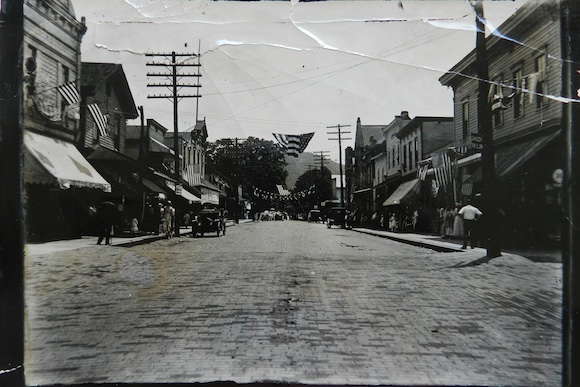
After the fire, before the Market Village
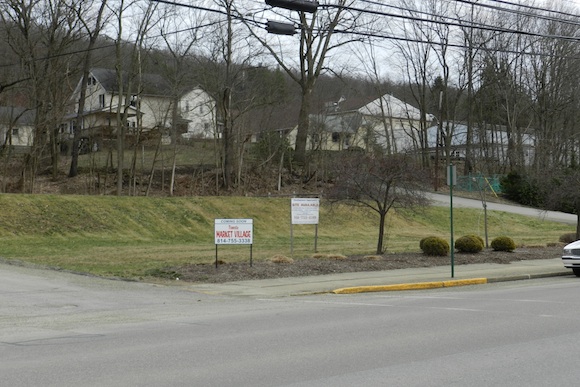
Photos courtesy Tionesta Market Village
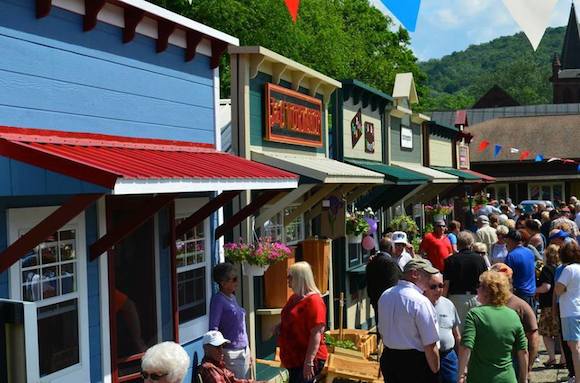
Dave Yeany prepares to open his shop
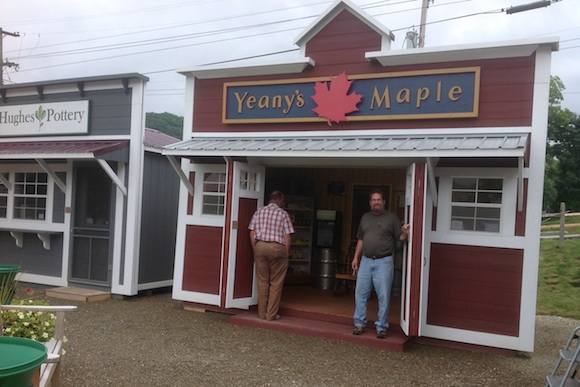
Dave Yeany’s maple syrup

What does a small, remote community do when it loses an important part of its downtown to a fire and can’t attract a developer to rebuild?
It took close to a year to remove the charred remains. When it became clear insurance would not cover the cost of rebuilding, the Forest County Industrial Development Corporation bought the properties and sold them to its sister organization, the Industrial Development Authority, which started shopping them around as a package deal to developers.
There were no takers.
“Nine years past with no investment in the community,” recalls Farley Wright, current president of the IDA/IDC. “The traffic in town was dwindling and the remaining retail community was feeling the effects.”
More than half of Forest County is covered in public lands and waters, mostly the Allegheny National Forest. People come from miles around to fish, hunt, paddle and spy the area’s old growth trees. Visitors take to local trails on snowmobiles, ATVs, horseback and foot. Tionesta, the county seat, is nestled between mountains that rise steeply on one side and the Allegheny River, flowing on the other. This is the childhood home of conservationist Howard Zahniser — visit and it is no wonder he wrote America’s Wilderness Act of 1964.
But Forest County is also one of the Commonwealth’s least populated counties — 65th out of 67 to be exact, and in 2003 regional efforts to grow nature tourism were only just beginning.
“We just weren’t in a position to attract a developer,” says local resident Julia McCray. “We didn’t have the foot traffic, the population. The tourism is seasonal.”
‘We had to do something for ourselves’
Like many people here, McCray wears a lot of hats — artist, B&B owner, visitor center manager, IDA/IDC project manager.
“People would ask: ‘Why don’t you do something with that block?'” she recalls. “They don’t want to hear we don’t have what it takes to attract a developer. They just want a solution.”
Then one day, Wright was talking to his wife about seasonal kiosks in malls. It made him think about populating Tionesta’s empty block with rustic sheds and filling them with seasonal micro businesses. Wright knew Forest County had many skilled artisans and craft food producers. Perhaps some of them wanted to try retail? He floated the idea at the next IDA/IDC meeting and, to his surprise, it got traction.
“We had to do something for ourselves,” Wright explain via email. “There had been a lot of discussion…and at least a half a dozen consultant studies suggesting a variety of things typically centered around outdoor recreation, arts and crafts, and cultural heritage. But studies can give you ideas of what to do, but not necessarily how to get them done. We needed something that could be affordable so we didn’t have to ask for outside funding — something that would be embraced by the community as well as the visitor.”
McCray refined Wright’s design concept, replacing the idea of rustic sheds with façade designs that mimicked 1900s storefronts — the style of the buildings that burned — to better fit the remaining downtown. Prominent local businessman Jack Sherman, who serves on the IDA/IDC boards, was asked to lead the project. Sherman has several business ventures but is best known for building the Sherman Memorial Lighthouse along the river in Tionesta, a tribute to his family and the community. Among the quotes inside: “If you enjoy what you do, you don’t have to work a day in your life.”
“Anything Jack is involved in is always done right,” says McCray. “He’s a detail person. He is also very creative. He knew what needed to be done and how to do it.”
Tenants at the Tionesta Market Village, as it was soon dubbed, would be given three facades and shed sizes to choose from. Rent was set at $50, $60 and $70 a month, depending on the chosen model. Tenants would also have to pay for electricity.
“The first thing we wanted to accomplish was to increase traffic to the community so we could once again attract investment,” explains Wright. “Next, we wanted to create an opportunity for micro-enterprise to flourish by providing sales space with low-overhead and significant market exposure.”
‘It’s never been done here. It won’t work’
Initial reaction from the community was mixed.
“I was a little skeptical at first but thought it was worth a try,” says Dick Johnson, who owns Forest Hardware across the street from the lot that burned. Johnson’s building has been in his family since 1907, when his great, great grandfather built it; the hardware store business itself has been handed down over three generations.
Others weren’t so optimistic.
“When you start a project, people don’t know what you want from them,” recalls McCray. “You get naysayers: ‘It’s never been done here.’ ‘It won’t work.’ They don’t understand it so they don’t accept it. When we brought our first building to the lot that changed almost immediately.”
Bolstered by the feedback, IDA/IDC put an article in the paper about opportunities to sponsor planters, benches and a small wooden stage. $7000 rolled in over three days.
More sheds arrived — eight total in that first year, 2013.
“We had a waiting list almost from the very beginning,” says McCray. More sheds were brought in the following summer, bringing the total to 11. The area was landscaped and a small pavilion and stage erected. The total price tag for the project was about $40,000. The Village sat right on Route 36, a main thoroughfare for traveling through Forest County. It grabbed drivers’ attention. Many stopped.
‘People are from everywhere. Pittsburgh, Butler, Erie…’
Attendance at the Market Village ranged from 300 on a slow weekend to more than 1,000 on a busy one, big numbers in a small rural town. Tionesta is still “A Special Place with a Relaxed Pace,” as its welcome sign suggests, but the new foot traffic is changing things. A few vendors have made part-time hires. Nearby properties have started getting fixed up. Two businesses have opened nearby.
Tom McCloskey opened The Coffee Pot, across the street, just as the Market Village was getting off the ground. McCloskey grew up in town, but left for about two decades. When he returned,”there was nowhere to get a good cup of coffee,” he recalls. He wanted to change that.
“I wanted to do try to do something to put some life into downtown,” explains McCloskey. His café is furnished with rustic wooden chairs and tables, and bustles with customers, mostly locals. It’s Wednesday, and the Market Village across the street is prepping to open that afternoon — extended hours leading up to a big festival weekend.
McCloskey initially worried that the Market Village would be another flea market, but that changed as the project unfolded.
“I was impressed with what they did over there,” he says. “Everybody I’ve talked to seems to enjoy it. On the weekends, we get traffic flowing in both directions. It’s a good team effort.”
Dave Yeany, owner of Yeany’s Maple, came in for lunch. He is in his first year as a vendor at the Market Village. In the last year he’s hired part-time help and invested in a major equipment expansion, switching from buckets to a tubing system to collect his sap.
This year’s sales haven’t been quite as good as he had hoped, he says, but he didn’t blame the Market Village. “The economy is still dragging,” he muses.
Mother Nature was not so kind to him this year, either. As part of his ramp-up at the Market Village and in wholesale, he put in 1000 new taps. In July, a wicked windstorm passed through and snapped many of the trees, wiping out half of his new taps and worse, the production capacity of the downed trees forever.
Asked if he planned to return to the Market Village next year, he insists, “Absolutely. I’d like to expand. I’d like to get another building and sell maple ice cream.”
The Market Village has increased foot traffic to downtown “dramatically,” adds Yeany. “This little restaurant we’re in gets overwhelmed on weekends…People are from everywhere. Pittsburgh, Butler, Erie, local people.”
Others agree.
“[I’m)] very surprised at the number of visitors the Village attracts,” says Johnson, the hardware store owner. “Lots more foot traffic and bicycles, too. We’ve seen an increase in people who just stop in and look around after they’ve been up there.”
“I consider it one of the hidden gems in the PA Wilds,” asserts John Straitiff, director of the PA Great Outdoors Visitor Bureau, which is promoting the Village in visitors’ guides, magazines, rack cards and online. “I love the concept and am very proud to have it in our region. Not only does it bring tourism spending to Tionesta, but it is also helping grow the cottage industry in Forest County. With live entertainment scheduled throughout the season, the Market Village has become more than just a place to shop — [it’s] a destination for fun, relaxation and fellowship.”
‘It took a village to make a village’
Before long, and with some prodding, the Market Village tenants formed a merchant association and started operating independently, setting collective hours and marketing strategies while IDA/IDC dropped into more of a landlord role.
“The IDA/IDC can help create an opportunity for the micro-enterprises, but long-term success depends on the energy and drive of the entrepreneurs,” explains Wright.
Jill Foys, executive director of the Northwest Regional Planning and Development Commission, which serves eight counties (including Forest County), says the Market Village has gotten real traction as an incubator for micro businesses. She has visited the project in a professional capacity and also brought out-of-town family to check out the Village and L&B Chocolate down the street.
“The low cost, high visibility location of the village allows skilled artisans, food producers and retailers to take the step from selling to friends and neighbors from their homes to having a storefront,” she says. “Being part of the village also provides the entrepreneurs with marketing capacity they couldn’t afford individually.”
Wright and McCray see a promising future for the Tionesta Market Village. Already, there is an effort to add the Village to the PA Wilds Artisan Trail, and to connect it to other arts communities along the Allegheny River. Vendors may shift in and out, but that is the nature of an incubator.
And, according to McCray, if the revitalized town eventually attracts a developer for the lot, great — the Market Village could always be moved to a new location. If not, well, that might not be so bad either.
“It was meant to be a temporary solution, but no one seems to mind if it’s permanent,” she says.
The Market Village project has already helped change the general attitude in the town, and you can’t put a price on that.
“It’s brought this vitality and life to the downtown that was missing,” adds McCray. “People seem to notice us now. People used to drive through town and not stop. It was a little sad. Now, you see people buzzing into town and all of a sudden they slow way down and start looking.”
Wright agrees.
“What both surprised and pleased me the most was the embracing of the project by the entire community,” he says. “While IDA/IDC’s willingness to embrace the project was one thing, without broad-based support the project would struggle. In a sense, it took a village to make a village.”
TATABOLINE ENOS travels the Pennsylvania Wilds working with small business owners, artisans, entrepreneurs and residents who are helping grow the region’s nature and heritage tourism industry. She lives in a small farming town in the northwest corner of the PA Wilds with her husband and two young sons. Follow Ta’s work at facebook.com/pawildsTreps or on Twitter at @pawildsTreps. To explore the PA Wilds region, check out www.PAwilds.com.


